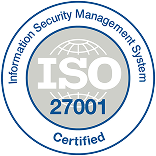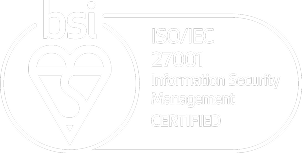ISO/IEC 42001 Annex A Controls Explained A Practical Guide
AI now sits in your products, operations, and customer journeys. That’s real opportunity—and real governance risk.
ISO/IEC 42001 is the first international AI Management System (AIMS) standard and the benchmark for AI governance. This guide explains the ISO 42001 Annex A controls, so you can close gaps and operationalize evidence without overbuilding.
What you’ll get
- Plain-English overview of Annex A and how it differs from ISO/IEC 27001’s Annex A
- The main control themes, common gaps, and what “good” looks like in practice
- A high-level, outcome-level cross-reference to the EU AI Act for high-risk AI
- A phased implementation approach
- A quick reference ISO 42001 controls list you can map to your evidence model

The TL;DR ..
ISO/IEC 42001 turns AI governance intent into practical, day-to-day actions.
This guide explains what Annex A controls are, how they differ from ISO/IEC 27001, and how to implement them without overbuilding. It highlights common gaps, the main control themes, and how Annex A links to the EU AI Act so teams can move from policy to measurable, audit-ready assurance.
Key takeaways:
-
Annex A gives you the practical backbone of an AI Management System, translating AI governance into real, day-to-day controls across data, models, oversight, and operations.
-
Strong AI governance depends on clarity of ownership, documented evidence, and consistent processes that link policy to measurable outcomes.
-
Most gaps come from weak documentation, unclear responsibilities, and ad hoc monitoring, all of which Annex A helps standardise and strengthen.
-
Aligning Annex A with frameworks like ISO/IEC 27001 and the EU AI Act lets you streamline compliance, reduce duplication, and build a unified, audit-ready evidence model.
What Is Annex A in ISO 42001?
Annex A is the organized set of control objectives and controls that bring an AI Management System to life. If the AIMS is the operating system, Annex A is the set of features you run day to day. It follows the familiar management-system pattern from ISO/IEC 27001, but focuses on AI-specific needs such as data suitability and lineage, human oversight, model evaluation, drift monitoring, and controlled change. Applied well, Annex A turns policy into practice and streamlines ISO 42001 implementation

ISO/IEC 27001 Annex A vs ISO 42001 Annex A vs EU AI Act
|
Aspect |
ISO/IEC 27001 Annex A |
ISO 42001 Annex A |
EU AI Act (high-risk) outcomes |
|
Focus |
Information security controls across people, process, tech |
AI lifecycle governance and assurance |
Legal obligations for high-risk AI systems (governance, documentation, oversight, testing, robustness) |
|
Primary objective |
Protect confidentiality, integrity, availability |
Make AI trustworthy, documented, and controllable |
Protect fundamental rights and safety; ensure quality, transparency, human oversight |
|
Typical artifacts |
SoA, security policies, access/ops records |
Model cards/registry, data lineage, bias/robustness tests, oversight checkpoints |
Technical documentation, instructions for use, logs, risk management, post-market monitoring |
|
Scope of assurance |
Org-wide ISMS and control environment |
Org-wide AIMS and AI use-case portfolio |
System-level compliance for in-scope high-risk AI placed on the EU market or used in the EU |
|
Day-to-day owners |
CISO/ISMS leads, control owners |
AI governance lead, product/ML owners, risk/legal |
Providers and deployers of high-risk AI; notified bodies/authorities for conformity and oversight |
|
Evidence emphasis |
Security baselines, risk treatment, audit trails |
Data/model suitability, testing, oversight, operational monitoring |
Legally prescribed documentation, testing/quality evidence, logs, and monitoring to demonstrate conformity |

What’s New in ISO/IEC 27002:2022
Annex A groups ISO/IEC 42001’s requirements into clear, practical themes that shape how an AI Management System operates day to day. These themes reflect the full AI lifecycle, covering how you govern AI, manage data and models, apply human oversight, and keep systems reliable in production. Understanding these themes helps you identify where gaps typically appear and what strong, evidence-backed control implementation looks like in practice.
Data & Model Management
What it is
- Assuring data suitability and full model lifecycle governance with traceability
Common gaps we see
- Missing documentation for data sources, quality checks, and licensing constraints
- Inconsistent model versioning and weak linkage between model, data, and evaluation
- No standard for bias testing and model performance thresholds
- Limited visibility into prompts, retrieval sources, or third-party model dependencies
What “good” looks like
- Data lineage and quality criteria recorded for training, validation, and production data
- Model versioning with metadata linking datasets, tests, and approvals
- Evaluation metrics and thresholds including bias and robustness checks
- Change control for model updates with rollback criteria and post-change monitoring
- Defined rules for third-party and foundation models, including license and provider due diligence
Example artifacts
- Data lineage sheet and quality checks
- Model card or registry entry with versions and metrics
- Test report with bias and robustness metrics
- Change approval ticket and rollback plan
- Third-party model due-diligence record and license scope
Human Oversight & Competence
What it is
- Proving people can supervise, understand, and intervene in AI decisions
Common gaps we see
- Human-in-the-loop steps defined on paper but not embedded in tooling or SLAs
- Training assumes generic data literacy, not AI-specific oversight skills
- No record that intervention points were used or that overrides were reviewed
What “good” looks like
- Oversight points defined for data prep, model approval, deployment, and operations
- Escalation paths specifying when to pause, roll back, or seek senior approval
- Role-based training for AI developers, validators, product owners, and support teams
Example artifacts
- RACI for intervention points
- Override SOP and decision log
- Training curriculum and completions
- Reviewer guidance and runbook links
Operational Integrity & Monitoring
What it is
- Keeping AI robust and secure in production with monitoring and incident response
Common gaps we see
- Drift monitoring treated as optional rather than standard
- Incident response doesn’t distinguish AI incidents from general IT issues
- Security testing misses model-specific threats such as prompt injection
What “good” looks like
- Defined telemetry for data, performance, drift, security events, and user feedback
- AI-aware incident classification and runbooks with containment and mitigation steps
- Security testing that covers AI threats and dependencies
- Post-incident reviews feeding model and control improvements
- Regular control health checks and retesting cadence
Example artifacts
- Drift and performance dashboard export
- AI incident taxonomy and playbooks
- Red-team or abuse-testing report
- Post-incident review and corrective actions
- Retest evidence and control health-check record
Leadership & Governance
What it is
- Structures, roles, policies, and decision rights that steer AI in line with strategy and risk appetite
Common gaps we see
- Responsibilities not defined across Risk, Legal, Engineering, and Product
- Policies exist but don’t translate into procedures or measurable controls
- No consolidated inventory of AI use cases tied to owners and purpose
- Risk appetite for AI not stated, so exceptions are handled ad hoc
What “good” looks like
- Named executive owner and a cross-functional AI governance forum
- A documented AI policy with linked procedures and control ownership
- One AI inventory with purpose, owners, data sources, lifecycle state
- Defined AI risk appetite and decision rights for exceptions
- Role-based training plan for teams building, deploying, and monitoring AI
Example artifacts
- AI policy and procedures
- Governance forum minutes and decisions
- Risk appetite statement for AI
- Exception register with expiries and compensating controls
- AI inventory extract with owners and purpose
Annex A Control Table: Outcome-Level Mapping & Maturity Tips
|
Annex A theme |
Control area (paraphrased) |
What you evidence (max 3) |
EU AI Act outcomes (tags) |
Maturity tips |
|
Leadership & Governance |
AI policy and scope |
Approved AI policy, scope statement, linkage to strategy |
Art. 9 |
Map policy clauses to procedures and control IDs |
|
Leadership & Governance |
Roles, responsibilities, committees |
RACI, committee ToR and minutes, decision log |
Art. 9 |
Record decisions and owners in one register |
|
Leadership & Governance |
Risk appetite for AI |
Appetite thresholds, example decisions, KRIs |
Art. 9 |
Tie thresholds to automatic review triggers |
|
Leadership & Governance |
AI use-case inventory |
System register, purpose/owner, lifecycle state |
Art. 11–12 |
Add legal basis and decommission plan fields |
|
Leadership & Governance |
Policy → procedure → control traceability |
Crosswalk matrix, control library, owner mappings |
Art. 11–13 |
Keep stable control IDs across frameworks |
|
Leadership & Governance |
Exception management |
Exception log, approvals with expiries, compensating controls |
Art. 9 |
Time-box exceptions and retest compensating controls |
|
Leadership & Governance |
Training and awareness |
Role curricula, completion records, effectiveness checks |
Art. 14 |
Link training to specific control tasks |
|
Data & Model Management |
Data lineage and provenance |
Source register, lineage diagram, license checks |
Art. 10 |
Capture synthetic data flags and usage limits |
|
Data & Model Management |
Data quality and suitability |
Quality criteria, test results, acceptance record |
Art. 10 |
Define pass/fail thresholds with remediation |
|
Data & Model Management |
Privacy and lawful basis |
DPIA links, lawful basis, retention rules |
Art. 10 |
Store purpose and rights handling per dataset |
|
Data & Model Management |
Model registry and versioning |
Model card, version history, approver sign-off |
Art. 11–12 |
Require registry entry pre-deploy and post-retrain |
|
Data & Model Management |
Evaluation and bias testing |
Metrics pack, bias/robustness results, acceptance |
Art. 15 |
Standardize metric suites by model class |
|
Data & Model Management |
Change management and rollback |
Change ticket, rollback plan, release notes |
Art. 15 |
Pre-approve rollback criteria and drill |
|
Data & Model Management |
Third-party and foundation models |
Due diligence, license scope, usage constraints |
Art. 10–13 |
Track prompts, retrieval sources, API versions |
|
Human Oversight & Competence |
Defined intervention points |
SOP with pause/override, escalation path, logs |
Art. 14 |
Put intervention controls into the workflow UI |
|
Human Oversight & Competence |
Explainability for oversight |
Reviewer guide, simplified rationale, limitations |
Art. 13–14 |
Tailor explanations to reviewer roles |
|
Human Oversight & Competence |
Role competence and staffing |
Skills matrix, training records, shadowing logs |
Art. 14 |
Require sign-off that reviewers read metrics |
|
Human Oversight & Competence |
User communication |
Notices, instructions for use, limitation statements |
Art. 13 |
Version notices and test comprehension |
|
Human Oversight & Competence |
Ethics and harm review |
Harms assessment, residual-risk sign-off |
Art. 9 |
Escalate high-impact use cases to a forum |
|
Operational Integrity & Monitoring |
Telemetry and logging |
Performance, drift, security logs |
Art. 12, 15 |
Route alerts to named on-call owners |
|
Operational Integrity & Monitoring |
Drift detection and triggers |
Drift baseline, trigger thresholds, tickets |
Art. 15 |
Automate checks in pipelines with tags |
|
Operational Integrity & Monitoring |
Security and abuse testing |
Prompt-injection tests, data leakage tests, results |
Art. 15 |
Add red-team scenarios for model threats |
|
Operational Integrity & Monitoring |
Incident classification and response |
AI incident taxonomy, playbooks, comms logs |
Art. 11–15 |
Classify consistently and link to reporting |
|
Operational Integrity & Monitoring |
Post-incident review and CAPA |
PIR, corrective actions, retest evidence |
Art. 9, 15 |
Close actions with owners and due dates |
|
Operational Integrity & Monitoring |
Deployment and rollback readiness |
Runbooks, blue-green plan, feature flags |
Art. 15 |
Practice controlled rollback windows |
|
Operational Integrity & Monitoring |
Decommissioning and record retention |
Decommission plan, residual-risk notes, archives |
Art. 12 |
Snapshot model, data, docs at end of life |
|
Operational Integrity & Monitoring |
Supplier and dependency monitoring |
SLA reports, subcontractor visibility, API health |
Art. 10–15 |
Track concentration risk and fallbacks |
ISO 42001 EU AI Act Alignment: How To Use The Mapping
Use this crosswalk to align Annex A controls with EU AI Act high-risk duties. Find each Annex A control in column 1, confirm the related AI Act obligations in column 2, then assign owners and evidence types (logs, datasets, oversight records) for audit-ready proof. Prioritize rows marked as gaps in your roadmap.

How To Implement Annex A Controls
Phase 1: Assess
- Inventory AI systems and use cases with owners, purpose, data sources, and lifecycle state
- Compare current practice to Annex A themes to find gaps
- Identify legal touchpoints to add on top of Annex A, such as EU AI Act documentation fields
Phase 2: Plan
- Prioritize controls by risk and business impact
- Assign owners, due dates, and success measures
- Design your evidence model up front so artifacts are versioned and traceable
- Document ISO 42001 requirements for each control including owner, due date, metric, and evidence location
Phase 3: Implement
- Update policy and procedures and link them to control tasks
- Stand up registers for AI systems, datasets, models, suppliers, risks, and incidents
- Embed approvals and human-in-the-loop checkpoints into tools and workflows
Phase 4: Audit and Improve
- Run internal audits against Annex A and your crosswalk
- Track issues to closure and retest controls on a cadence
- Refine metrics, training, and dashboards based on findings

Common Implementation Challenges (and How To Fix Them)
- Unclear accountability across Business, Risk, and Engineering → define a single executive owner, stand up a cross-functional forum, publish decision rights
- Policies exist but don’t drive action → translate policy into procedures and control tasks with named owners and due dates
- Documentation sprawl → keep one evidence library with versioning and link artifacts to controls and outcomes
- No standard for data or model evaluation → define data quality checks, model metrics, bias tests, and thresholds
- Limited oversight skills → build role-based training for developers, validators, product owners, and support teams
- Monitoring as an afterthought → require drift and security telemetry for every production model and trigger reviews on alerts
Risks and controls are often managed across different teams using disconnected systems. Without a clear view, it’s hard for boards to spot gaps or weaknesses, and even harder to prove controls are working.
Integration With Other Frameworks
Annex A works best alongside the compliance frameworks you already use. It aligns cleanly with the following:
ISO/IEC 27001
- Reuse your ISMS backbone for governance, risk, policy, and audit
- Map Annex A to ISO/IEC 27001 Annex A controls to avoid duplicate owners or artifacts
NIST AI Risk Management Framework
- Align Annex A activities to Govern, Map, Measure, and Manage
- Use Annex A evidence as inputs to AI RMF profiles and measurements
GDPR and privacy laws
- Ensure lawful basis, purpose limitation, data subject rights, and privacy by design for AI
EU AI Act
- Use the outcome-level crosswalk and add Act-specific items such as legal documentation fields or market-surveillance expectations
Frequently Asked Questions
Is Annex A mandatory for ISO 42001 certification?
Yes. Annex A provides the controls that make an AIMS workable. Certification looks for implemented controls, evidence they operate as intended, and a cycle of measurement and improvement.
How do you map Annex A to existing AI risk controls?
Build a single crosswalk. Map each Annex A control to the closest existing control in your library, then point both to EU AI Act outcomes where relevant. Keep evidence in one place and tag it to controls and outcomes so you can generate different reports without re-collecting artifacts.
How does Annex A support trust and transparency?
Annex A formalizes data and model documentation, human oversight, and operational monitoring. Those artifacts let you explain decisions, show safeguards, and demonstrate improvement over time.
Conclusion and Next Steps
What’s Next For AI Governance Controls
Expect steady updates to guidance and harmonized standards. Keep crosswalks current, watch for clarifications that refine documentation and testing expectations, and keep a cadence for control health checks and retesting. Expect an initial maintenance revision post-2026 as adoption feedback and harmonized standards mature.
Make Annex A Operational
Run ISO 42001 Annex A as your operating model for AI day to day. Assign clear owners, keep one control library and a single evidence model linked to control IDs, and map those artifacts once to EU AI Act outcomes to avoid duplicate work and stay audit-ready. Maintain a steady cadence of testing, oversight, and training so your AIMS improves as your AI portfolio evolves.
.png)








_HighPerformer_Enterprise_HighPerformer.png)








